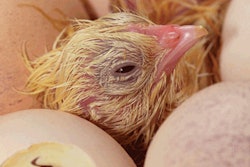Here we go again! China appears to be covering up the extent and severity of a serious disease of livestock. Media reports, including an article in the August 16th edition of the New York Times suggest that the government of China is continuing a long standing policy of selective release of information concerning a disease of pigs, following similar lack of transparency over avian influenza and SARS.
In May 2007 Dr. Jia Youling, Director General of the Veterinary Bureau of the Ministry of Agriculture reported a series of outbreaks of Porcine Reproductive and Respiratory Syndrome (PRRS) to the Office International des Epizooties (OIE), the UN- FAO agency responsible for collection and dissemination of information on livestock diseases. Since this time reports have been circulating of heavy losses among swine herds extending from the Western seaboard to provinces inland. A supplementary report issued by the Ministry of Agriculture on August 7th reported 17 outbreaks stated to be PRRS occurring from April to August 2007. The standard report to the OIE attributed losses in herds to “virulent PRRS” with mortality ranging from 25% to 70%. In Western nations where the disease has been recognized since the early 80’s the condition is erosive in nature, resulting in reproductive failure and chronic respiratory signs attributed to the pathogenicity of the causal Arterivirus, characterized in 1991.
Anecdotal reports filtering out of China suggest that acute onset high mortality and rate of spread are inconsistent with PRRS as it occurs in the hog industries of the USA and the EU. The apparent escalation of up to 80% in the price of pork confirms that the disease in China is responsible for profound reduction in the supply of pigs for slaughter. The lack of credible reports from the Ministry of Agriculture of the PRC and the failure of USDA-FAS representatives in China to investigate and document the situation are of concern, given the extent of hog production and the potential for dissemination of the condition through Southeast Asia. Significant questions relate to the epidemiology of the syndrome and the infectious agents, alone and in combination, responsible for morbidity and mortality. Authorities in China state in their statutory reports to the OIE that the diagnosis of PRRS has been confirmed by PCR assay. Well and good, based on the ubiquitous nature of the virus causing PRRS. Concurrent infections must be present which have not been disclosed or the diagnosticians have been unable to identify other agents. Either way the authorities in China have the responsibility to submit representative tissue specimens to international laboratories and to request on-site review of infected herds. The current situation is reminiscent of the statements issued by the veterinary regulators in Thailand in 2001 attributing outbreaks of avian influenza to pasteurellosis in order to preserve their export markets.


















